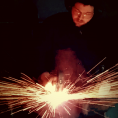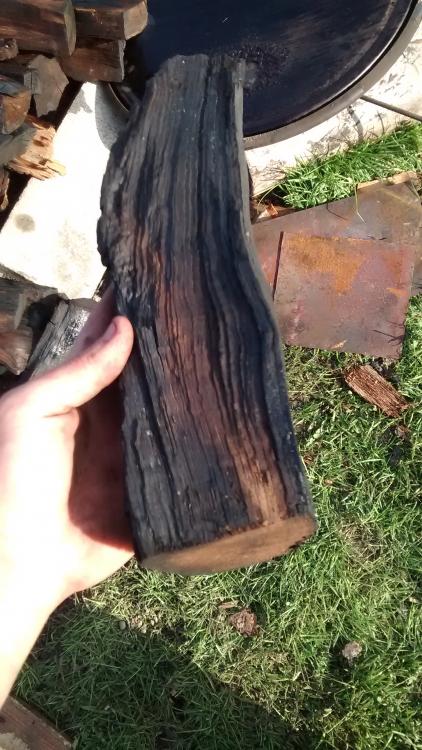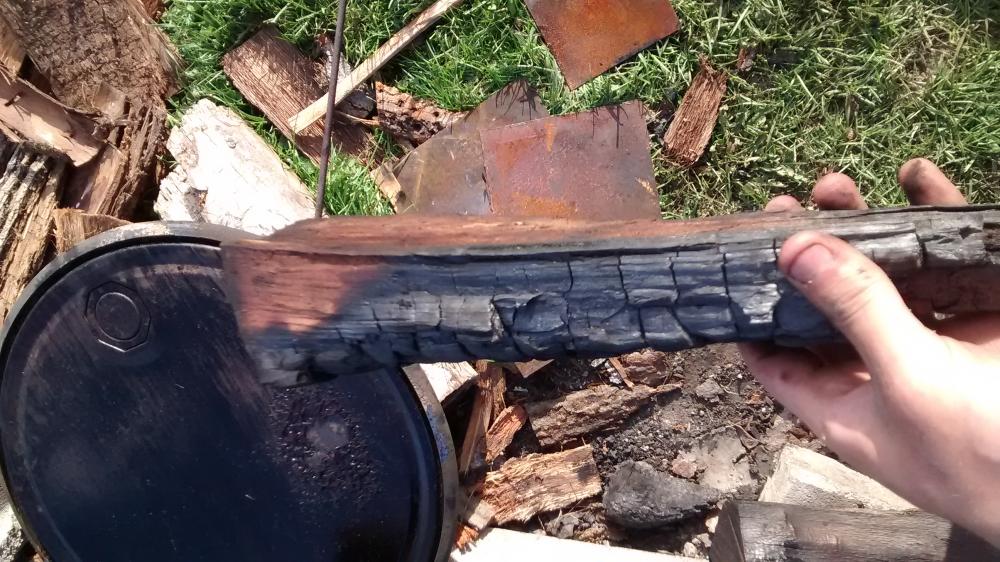-
Posts
733 -
Joined
-
Last visited
Content Type
Profiles
Forums
Articles
Gallery
Downloads
Events
Everything posted by Will W.
-
So after nearly constant research for the past few days, I've established a process (on paper) that I am going to try to follow to a dime. Please, feel free to critique if anything is wrong. I would like to do it well the first time. Normalize (twice) at °1600-°1700 *Oil* quench at °1500-°1600 to °150 Cryo quench (dry ice and acetone) down to °-170 and allow to return to room temperature Dual cycle temper @ °350-°375, one hour per cycle. Thoughts? Stainless is a bit foreign to me, so I would not doubt that something here is off. Thanks in advance.
-
Interesting. Perhaps my local AirGas will have it. Worth looking into. Thanks. What would be the recommendation for hardening before the cryo? As stated, I've heard air or oil hardening. I'll likely do oil hardening if either are an option.
-
That makes sense. Not necessarily the kind of thing you want right on the shelf. I'll be asking around for sure then. Thanks for the tips.
-
Thanks Thomas, I'll try to look for it around my area. I've never seen it in a grocery store, but I could have overlooked it. I'll check the yellow pages too.
-
Thank you for the reply. I do have acetone. Dry ice on the other hand, I do not. Any recommendations on where I could obtain some? I've read about making your own by capturing the CO2 from a fire extinguisher, so that is one option. So is cryo necessary? I've read that 440C can achieve an RC 60 hardness, but I assume that is only after a cryo cycle, yes?
-
Envy does not define what I am feeling well enough haha. Nice score Nub.
-
Good day. I have recently obtained some 440C, and I was considering making a kitchen knife from it, due to it being stainless. I've read about how difficult it can be to forge, so it will likely be a purely stock removal knife. Though I typically forge my blades, I've done a few all stock removal. Not quite as fun in my opinion, but a better option given the material. I'm concerned about the heat treat, but I would very much so like to do it myself, rather than sending it to someone. Now... Everything I've been able to pull up on various websites about heat treating 440C is conflicting. Some say oil quench, some say air hardening, some say you can do either (which i didnt think was possible, but ive been wrong before.) and some on either sides of those spectrums talk about a cryo cycle after hardening. I've no access to liquid nitrogen to do cryo, nor do I believe I have the knowledge, setup, or skill to use it. My question is: to anybody who has worked with 440C, what is the recommended way to heat treat? Is it true it can be oil hardened or air hardened? This just seems strange to me. Is a cryo cycle necessary? What I (think I) understand about cryo is that it converts all the austenite left over from the quench into martensite, maximizing hardness before tempering. That being said, and assuming I actually understand it correctly, it would not be completely necessary, as the quench would still harden it, just not to its full potential, yes?. Thank you in advance for your time.
-
Price depends on so many factors, it will be truly difficult for anyone to determine unless they're standing right in front of it. Is there any damage? What kind of condition is the face in? And the corners of the face? How about the Hardy hole? And the horn? Any cracks? Any chips? How's the rebound? I hope you see my point now. My advice would be to post more pics if possible, and perhaps the more experienced anvil enthusiats on this site can help you.
-
Nice!!! Looks incredible.
-
Thomas I see. Thank you for the info. The handbook you mention sounds interesting and I will make sure to look into it. Steve Thank you for clarifying my misinformation. That was why I put "iirc" and it seems I did not remember correctly haha.
-
Thomas I was unaware the chromium was stuck in carbides. I didn't know that was even possible. The chromium (among what else may be caught in the carbides) could then be put back into the matrix of the steel? Thereby making it stainless? Could you please explain? I'm genuinely interested in this.
-
Stainless steel is defined as any steel containing more than 10% chromium by mass (iirc) and the specs I was able to find on D2 state that it has between 11%-13% chromium by mass, making it a stainless steel. I would imagine it would work just fine as a blade steel, if that is your intention, as those same specs stated that it has around 1.5% carbon, which is pretty high, but the steel will decarburize during repeated welds. You will probably encounter the same problem as with other chromium containing steels, in that they form chrome oxide in between the layers, which makes welding them tricky. I've heard that alternating your layers so no 2 chromium containing steels come into contact with each other will help mitigate this. There are other threads in this forum talking about this very process, I would read those if I were you. This is not factual according to most experts its free chrome and D2 has very little free and able to form oxides.
-

Yet more retort questions
Will W. replied to Will W.'s topic in Solid Fuels: Coal, Coke, Charcoal, Wood, etc
OK, I'll give it a try. Thanks. -
You could try to make a steel plug and weld it in, if that is an option in your situation. Note that welding cast iron is tricky, but not difficult. Pre heating and post heating are a must in my opinion, cast iron tends to crack off any welds put to it if those heats are not involved, in my experience anyways. Not to say this is the best option, but this is what I would try. Pictures would also help in determining the best course of action.
-
Not pertaining to metal working, so a little off topic, but right angle drills can be a literal knuckle buster sometimes. One time I was drilling holes in some floor joists in order to run plumbing, using a right angle drill and a spade bit. Well, the bit grabbed, and I ended up punching the floor above me at about 100 mph when the drill took off. I stopped using spade bits after letting a few angry words fly at the drill.
-
Wiser words have never been spoken.
-
Hello all. I have recently built my own charcoal retort, and am in the process of slowly tuning it to be as optimal as possible. This last firing I did went well (I think), I got about 50 percent good glassy charcoal and about 50 percent partially charred wood. The pieces that partially charred were larger than the ones that completely charred, so I think that was my issue. Anyways, I'm wondering if I can throw this par-char into my next batch combined with pure wood. Will it char the rest of the way along with the fresh wood? Or is it more likely that it will burn up before the fresh stuff is done? Most of it looks like this. And some of it was further along and looks like this. Thank you for reading.
-
Allow me, if you will, to offer you some friendly advice. Learn how to move steel before you move on to these big blades. If you had trouble widening the stock, then that is an obvious sign that you need practice, and your end product is suffering because of it. Work with some mild steel for a while and figure things out. It's far cheaper and easier to move. It's been said here a million times *for a reason!* I'm not trying to knock your blade, it's a halfway decent start.
-
I believe this is the best use for rebar in the smithy. The lines on rebar make for a good grip, and make it easy to determine the orientation of the billet in the fire.
-
In my experience, if it has a grinding wheel when it fell and it's in decent condition, meaning the edges are not too thin, you're probably ok. Still, check it. A cutoff wheel though? No way, change it! It probably fractured or chipped, they're very thin and brittle, and if it did, it will probably turn into a million pieces upon the next use.
-

Mission Impossible W/Pictures
Will W. replied to SReynolds's topic in Blacksmithing, General Discussion
Good point, I had not considered that. I would say just build one that works for you, or modify what you have. No sense in wasting time and energy trying to fight an uphill battle. -

Mission Impossible W/Pictures
Will W. replied to SReynolds's topic in Blacksmithing, General Discussion
I'm no expert, I've never even used a scrolling jig, but it seems to me that vise gripping the hot metal to the jig with the vise grips straight up and down, parrellel with your vise jaws, right at the inner most bend of the scroll would hold the hot metal and not be in the way. Judging from your post, I assume you've tried this, but it seems like it would work to me, no? Or, perhaps, if you bent that same section (the initial inner most bend) a little further, to a pretty steep angle, it would sort of lock it in as you go around. -
Very nice! I like how you kept the handle simple, it forces the eye to the pattern, and doesn't make the knife look too busy. Well done.
-
Well said. That's a good attitude you have. Is it possible in your situation to set yourself up with a forge and hone your skills as you seek what you desire? Given that it may take time to find what you're looking for, that would be my recommendation. The more hands on, hammering on steel experience you have, the better prepared you will be.


